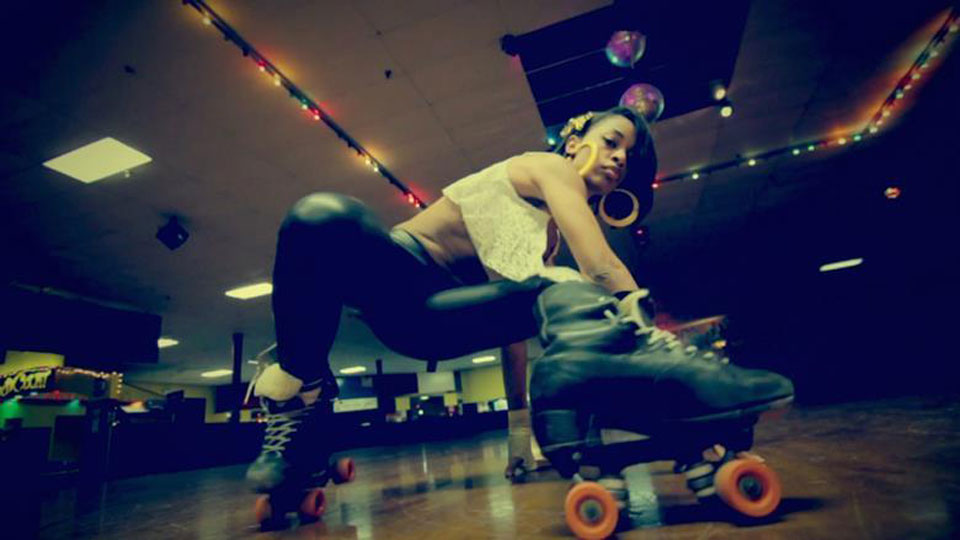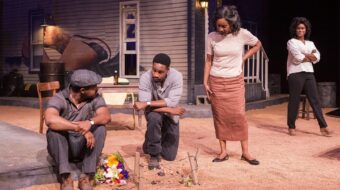
What a closing night for the Los Angeles Film Festival! I saw the 2018 documentary some five years in the making, United Skates, an intimate exposure of a world I frankly knew nothing about. I suspect that outside of the Black community in America, the experience of roller skating—as exercise, as family tradition, as social event, as competitive sport—is a completely unknown quantity.
United Skates won the Audience Favorite award at New York’s Tribeca Film Festival earlier this year and so far has garnered a 100 percent rating on Rotten Tomatoes. On the night of the L.A. premiere it was announced that the film had just been picked up by HBO. It’s an eye-opening must-see that will move, inform, entertain and energize you.
Dyana Winkler and Tina Brown are the two guiding spirits behind this film. They produced and directed it and also served as principal cinematographers. Among the executive producers they recruited are John Legend, Jeffrey Soros, and Ty Stiklorius.
In a tightly edited 90 minutes that feel like a spontaneous whirl around the leading roller skating rinks of the United States, we meet people in various cities—Chicago, Charlotte, L.A. and elsewhere—who are devoted to keeping these venues going. Each city has its own style of skating, and often its own homegrown music to accompany it. In fact, the early history of hip-hop and rap is intimately related to the rinks, in those early days the only venues where performers were offered a stage and an audience. For example, roller skaters were the first people to appreciate Queen Latifah. At Compton’s Skate Land, the first DJ they hired was Dr. Dre. The film includes early footage of some of these artists.
Skaters delight in adapting their outfits and especially the skates themselves into eye-catching fashion statements that reflect personality, culture, esthetics. Many are the relationships and marriages born of a casual encounter at the rink.
Just to be clear, the skates we are talking about are the four-wheel kind, not the in-line skates that came in later. In-line skates are good for a workout and distance, and are considered more stable, but they afford far less potential for inventive choreography, tricks and bustin’ some bad moves.
In many places, racism limited African-American rink attendance to only one night a week. It wasn’t stated quite so boldly, but everyone knew that a rap night or R&B night was for Black customers. Eventually, the term “Adult Night” came to be the accepted code. Even then, posted signs warned against saggy pants, or the smaller circumference wheels that some skaters prefer, and Black skaters were physically searched before they could enter, while white skaters were not. In the civil rights era, the Klan openly threatened integrated rinks.
Roller skating rinks have declined precipitously over the last decades in America, and we get to see some of the reasons why. The film documents a sad closing night at one of the most important rinks in L.A. County. A rink that goes out of business means families and kids have lost a place to express themselves, to revel in their wholesome collective community culture. “There’s something about hitting that floor—there I can breathe,” says one mother of a skating family. Her voice is echoed by another: “There could be a thousand people on the floor, but when you’re out there in the zone, that’s you.” The teenage son Shannon says he releases a lot of pressure and frustration while skating and, interviewed months after a closure, he reports feeling “caged.” “This is where the hair came down,” one woman recalls of many nights when skaters would go all night and leave for home as the sun was rising.
In Chicago’s Rich City Skate that the film documents, Black history placards are placed all around the walls of the rink, hung low so that children could become familiar with the significant figures of their heritage. Maybe it’s a little cynical to say rinks close just to hurt African-American communities, although in the punitive politics of today nothing would shock me. The main reason that venues close is that they are big footprint properties in urban areas, and developers (always good friends to city council members) see big box stores and high-rise condo and rental complexes on those tracts. They get the land rezoned to enhance its economic value, and that’s the kiss of death. As one rink owner says, “It’s all about the money now.” In one case, the rezoned building still stands empty and unused after four years.
For a time, as the film shows, three roller skating rinks per month were being rezoned across the United States. As one skater says, “They can take the goddamn building but they can’t take the spirit.” Fans of the rink raise their fists in resistance, as if to declare, “Rest in power.”
In a few places, however, Craig Schweisinger, introduced in the premiere audience as “the craziest white man in Compton,” had to admit that the reason he had to close Skate Land was not financial. “We were surrounded by gangsters. It was just too dangerous.” The problems were never inside the rink; they were almost always in the parking lot. Inside was neutral territory: Crips and Bloods simply left their loyalties at the door and skated their cares away. It was one more way the rinks provided a low-cost community service, even if, weighed against high property taxes, it’s a hard business to make commercially profitable.
When the rink goes, kids don’t have a place to relax and work out their frustrations, as Shannon says. They’re back on the streets, in public parks and church parking lots. Not long after the rink closed, the “caged” Shannon got into trouble. His mom, Phelicia Wright from Los Angeles, says she reported her own son to the authorities in an attempt to set him straight: “I’d rather see him in jail than dead.” He served a three-year term and upon release the first thing he wanted to do was hit the rink floor. Ms. Wright appeared alongside co-director Dyana Winkler at the talkback and an audience member asked how Shannon was doing. Unfortunately, she answered, he got into more trouble. “They’re trying to give him 42 years.” Wright asked for the prayers of anyone in the audience who cared to hold Shannon in their thoughts.
A questioner asked how Winkler and Brown came to this subject. Winkler answered that she first noticed skaters in New York’s Central Park, there being no more rinks left in the city. The skaters told her if she wanted to see some real skating she should go down to Richmond, Va., for a national skate party. The two women stayed for the weekend, entranced by what they saw, but as the only two white people present, were reluctant to start filming. After they gained the confidence of the skaters, they became a presence in the skate world for the next five years, but were never paid. “A lot of it was just us doing twenty jobs every day,” she recalled. “We may never do a documentary again.” Eventually funding came along.
The filmmakers recorded over 500 hours of footage and struggled to find the story in it. Filming was often a challenge and involved a lot of trial and error. The ambient light inside the rinks had to be used, and capturing fast movement on skates was problematic; also, in that atmosphere, effectively capturing the skaters’ dark skins. James Vereen (or “Floss Bee”), one of the film’s auxiliary cinematographers whom I met afterward, is himself a skater, who found himself on skates with a camera, following some of his subjects at close range.
Another audience member asked, “If ice skating is an Olympic sport, why isn’t roller skating?” Felicia Wright had no trouble answering that one: “Our talent is not considered. Hopefully we can bring it to television.” Winkler chimed in as well: “If curling is an Olympic sport, so should skating.” In the film, riffing off some familiarity with the classic work by Tchaikovsky, skaters refer to a virtuoso balletic flying male split as “the nutcracker.”
Winkler and Brown have taken the film to Washington for a special screening for the Congressional Black Caucus, hoping to stimulate conversations in every city about keeping rinks open, keeping kids on skates, saving lives. In some cases, the rinks might be given landmark status to preserve them.
Craig Schweisinger has preserved much of the history of his rink at the Facebook site “Skateland U.S.A—Compton, Ca,” a remarkable motherlode of images and memories. The building is now torn down.
A trailer for the film can be viewed here. A two-minute vimeo used as part of the film’s Kickstarter campaign is here. From there you can also find others.

MOST POPULAR TODAY

High Court essentially bans demonstrations, freedom of assembly in Deep South

Resource wars rage in eastern Congo, but U.S. capitalism only sees investment opportunity

U.S. imperialism’s ‘ironclad’ support for Israel increases fascist danger at home

UN warns that Israel is still blocking humanitarian aid to Gaza







Comments